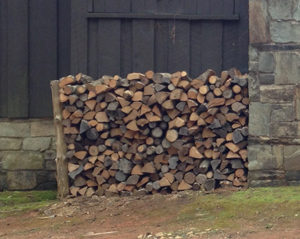Ants in Your Plants (and your firewood too?)
go.ncsu.edu/readext?633619
en Español / em Português
El inglés es el idioma de control de esta página. En la medida en que haya algún conflicto entre la traducción al inglés y la traducción, el inglés prevalece.
Al hacer clic en el enlace de traducción se activa un servicio de traducción gratuito para convertir la página al español. Al igual que con cualquier traducción por Internet, la conversión no es sensible al contexto y puede que no traduzca el texto en su significado original. NC State Extension no garantiza la exactitud del texto traducido. Por favor, tenga en cuenta que algunas aplicaciones y/o servicios pueden no funcionar como se espera cuando se traducen.
Português
Inglês é o idioma de controle desta página. Na medida que haja algum conflito entre o texto original em Inglês e a tradução, o Inglês prevalece.
Ao clicar no link de tradução, um serviço gratuito de tradução será ativado para converter a página para o Português. Como em qualquer tradução pela internet, a conversão não é sensivel ao contexto e pode não ocorrer a tradução para o significado orginal. O serviço de Extensão da Carolina do Norte (NC State Extension) não garante a exatidão do texto traduzido. Por favor, observe que algumas funções ou serviços podem não funcionar como esperado após a tradução.
English
English is the controlling language of this page. To the extent there is any conflict between the English text and the translation, English controls.
Clicking on the translation link activates a free translation service to convert the page to Spanish. As with any Internet translation, the conversion is not context-sensitive and may not translate the text to its original meaning. NC State Extension does not guarantee the accuracy of the translated text. Please note that some applications and/or services may not function as expected when translated.
Collapse ▲With the threat of frost looming, many people start moving sensitive plants to indoor settings. In the process, they may also be unintentionally moving nuisance pests with them. Some ant species, such as odorous house out, Argentina ant, and Asian needle ant may have started small colonies in the plant pots, particularly if the plants were infested with honeydew-producing insects such as aphids, mealybugs or scale insects. Once in the warmer interior of homes, the ants now have the opportunity to forage for food or even relocate to new real estate. Kudzu bugs and stink bugs will also abandon their summer-long feeding sites in field crops, trees and home gardens as they look for a place to pass the winter.
Pesticides are not needed in most cases. Check your plants over carefully outdoors for signs of foraging ants. Drenching the soil with water with a small amount of dish detergent may bring ants and other overwintering pests up to the surface. With ants, you can also place a liquid bait such as Terro on the cardboard squares that comes with the package or try placing bait on small squares of wax paper and place them on the soil surface.
More information about ants can be found at:
Cold weather also brings thoughts of sitting in front of the fireplace sipping hot chocolate (or other beverage of choice) which could make the ants happy, too, if you spill it or leave the cup sitting somewhere overnight. However, there are actually more important issues pertaining to firewood. First, if that stack of firewood outside your house has been left undisturbed since the winter, spiders, snakes and other unwanted “guests” may have taken up residency in it. Second – along with that firewood that you bring indoors and stack next to the hearth, you may have carried in spiders, assorted “bugs” (boxelder bugs, kuzdu bugs, etc.) and wood-damaging beetles and ants (such as carpenter ants). So, two important rules to follow :
- Always wear gloves when handling firewood.
- Never spray pesticides onto firewood before you burn it. While the chemical may kill what you saw crawling on the wood, but burning pesticide-treated lumber can be hazardous to your health.
There’s actually one other important rule about firewood – CUT OR BUY LOCAL. Aside from the pests that I mentioned previously, firewood can harbor invasive (and highly destructive) pests such as Emerald ash borer which calls several hardwood species “home” (and “food”). Don’t transport firewood in from other states (and vice-versa too). Although moving wood within North Carolina is legal, it is better to get it from a local source whenever possible. You can find details of where the EAB is found in North Carolina by visiting the NC Forest Service website.




